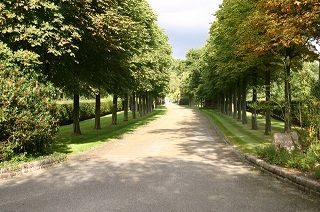From Guest Blogger Jess: Tips for Natural Tree Care

Don’t Forget to Mulch
Mulch is important for the health of your trees as much as it is for the health of your flower garden. It insulates the soil by providing a sort of buffer between the roots and severe temperatures, whether it’s extreme heat or extreme cold. It also retains water, which helps to maximize watering sessions by keeping roots moist for longer.
Remove grass and weeds at least three feet around the base of the tree (a wider radius is needed for larger trees) and put down new mulch at the beginning of every growing season to ensure that it’s still doing the trick. It should be three to four inches deep, and should not touch the tree itself.
Stick to natural mulch made of wood chips, and avoid any harmful chemicals or dyes, as they can seep into the ground and penetrate the roots of your tree, which can cause problems later.
Know When and How to Prune
Pruning is a critical part of tree maintenance. Plan to prune your trees every Fall. Regular pruning is a natural way to protect your trees from bugs and disease because many bugs are attracted to unhealthy plant material. Cutting off the dead or unhealthy portions is key to eliminating this opportunity for pests to flourish.
Don’t leave fallen fruit or dead limbs on the ground; if you do, it won’t be long before critters come with a vengeance to eat up your trees and bushes. If it’s too late to prune, don’t let it go untreated; pest control companies can help you put a lid on any infestation that pops up.
It’s more than just hacking away at the branches though. Read up on proper pruning techniques to make sure to guide the tree correctly.
Be Careful but Vigilant With Watering
Watering is another key part of tree care and maintenance. It’s difficult to recommend a specific amount to water because it will vary depending upon the type and size of tree, as well as the climate it’s planted in. There are, however, a few rules of thumb to make sure your tree gets the amount of water it needs to flourish.
Most importantly, water the tree immediately after planting it, and continue to check the soil daily to make sure it stays moist. During the first few years, a tree’s roots spend a lot of energy growing out to provide nourishment and a steady foundation for the trunk. Check the soil by inserting a trowel about two inches into the topsoil and wiggling it. This way you’ll have a good sample of the moistness of the roots. If the topsoil is moist to the touch, there is no need to water.
Roots need to have oxygen to breathe, so it’s important to not over-water. Over-watering is not only wasteful; it can also severely damage the root system of your seedling. Let the soil dry partly between watering, but make sure that when you do water, it’s enough to moisten the entire root system. For moderately sized trees, 30 seconds with a steady stream of water from a hose with a diffuser attachment is enough, but larger ones will need more. Use your own discretion when watering.
These tips are just a few basic starting points for caring for trees. Make sure to research the specific needs of your tree, and how those needs correlate to the climate in which you live.
